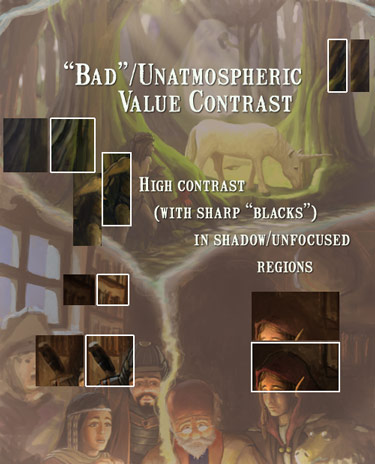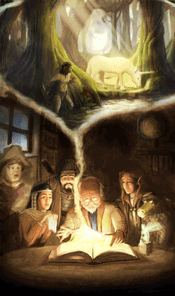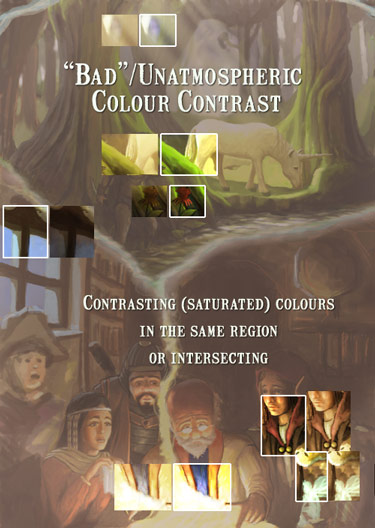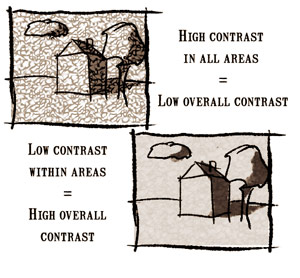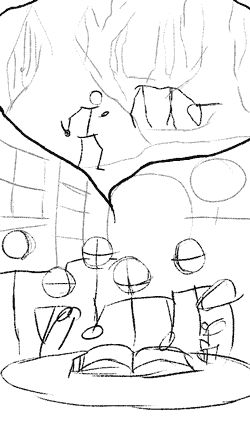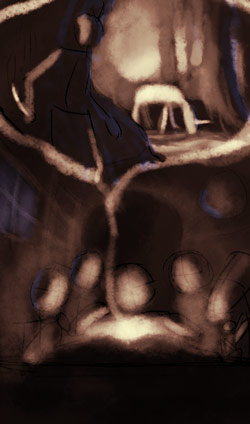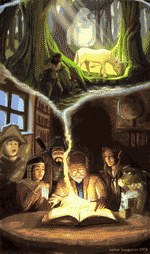Quote from: Misj' on Fri 25/07/2008 18:57:14
Version 3 (right side only).
Think the variation in openness, and general vertical variation makes it a lot more attractive. The angle of the house, which now appears to points more towards us is another improvement, that makes the image more dynamic. The ground area is varied and interesting, and there's no wasted space. I guess the sky now takes up a very large part of the image, but it could be filled with some foreground branches/leaves, and clouds.
I find myself in the unusual position of thinking that the angle might be a bit too low though. I think the horizon in the first one was nice, at the golden ratio vertically, and I usually place it there myself. Right now it looks like there's pretty much no view of the walkable area. Though when I look at the full size version it shows what needs to be shown, so I guess it could work well.
Another problem with these kind of low angles is that they can make the perspective a bit extreme and odd looking, especially if you don't use "a rounded lens" or three point perspective (right now the vertical lines are still completely vertical, which makes the very slanting / "horizontal" look extreme. So a box looks something like:
/|'''''|
/ |__|
|/__/
Think guys like Bill Tiller often bend the lines to simulate a rounded lens. I do at least. Our eyes have a rounded lens, so we're used to straight lines looking curved (though we don't think about it).
(Btw, something that messes up the perspective, making the roof look odd is that the upper window isn't in perspective, which I assume you're aware of, but ignored due to the sharp slanting lines it would've meant if you had followed the perspective. I don't personally think this is a good solution, as while it saves the window, it messes up our impression of the rest of the house.
Hm, looks like the lower window is out of perspective as well)
I'm not a stickler when it comes to perspective, but consistent perspective in individual elements ensures that we read the objects properly, so it's not a matter of them adhering to rules, but being read as intended.
Right now for instance, it looks like the house's top roof part is slanting, when it in fact isn't.
Regarding the lines themselves, I guess it may be a matter of style, but the many ruler like straight lines gives a pretty dull/unorganic impression. I'm not advocating extreme bended lines for everything, but something that makes run down buildings charming is their lack of clean surfaces and perfect lines. Especially for stuff like roofs. Just doing the lines freehand without the ambition of drawing perfect lines is usually enough to instill the analogue feel that is the beauty and paintings/drawings.
Zyndikate usually manages to get his lines very neat looking but still organic, so you could have a look at his stuff if you're interested. His line-work overall is annoyingly good.
It's interesting to follow your experimentation, so I hope you'll keep at it!
Edit: I think avoiding using rulers and perspective lines is a nice way to increase the analogue feel. Try estimating the perspective, and then correct the biggest error after the sketch is done. This way you keep the drawing process loose. Think zyndikate does this (me too).
Drawing a few lines from the vanishing points across the page to create a very loose grid is another way, that allows you to "see" the perspective, and follow it loosely as you put in your lines.









